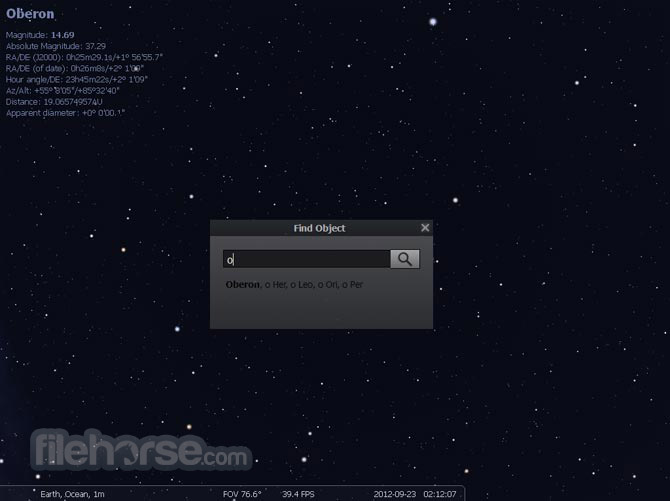

- #Stellarium eclipse simulation how to#
- #Stellarium eclipse simulation full#
- #Stellarium eclipse simulation software#
To reduce the moon-motion blur to three pixels, we would need to expose for no more than 1/2 second, and to remove motion blur entirely, no more than 1/6 seconds. Because the moon is the entire focus of the image, I think 6.3 px is way too much blur.

The moon moves 13° more per night then the background stars, so it would have 6.3 pixels of motion blur with the same lens and one second exposure. Therefore, assuming the worst-case scenario is that the fastest stars will appear to move at 0.0042 arc minutes per second (360° over 24 hours), 1 second is 0.0042' of movement, which equals a blur of 6.1 px. That 400mm lens on my APS-C camera has an angle of view of about 3.34° (2arctan((35)/(2*(1.5*400)))), projected onto 4,928 horizontal pixels, so each degree of view is projected over 1,475 pixels. For example, the 200mm lens with a 200mm teleconverter on my D7000 is 600mm equivalent, and 600 / 600 = 1, so 1 second is approximately the longest amount of time I should expose the stars. It states that 600 divided by the 35mm equivalent of the focal length of the lens gives the exposure time in seconds of an acceptably sharp image. In general astrophotography, some people use the "Rule of 600" to estimate how long of an exposure time we can use before the stars start to visibly exhibit motion blur. The D7100 and D800E have the same speeds because even though the D800 has more resolution, its pixels are spread out over a wider area then the D7100, and it just happens to round out roughly equal.
#Stellarium eclipse simulation full#
Nikon D800E, Full frame 36.3 mp, with no motion blur: Nikon D7100, APS-C 24.1 mp, with no motion blur: Nikon D700, APS-C 16.2 mp, with no motion blur:

That's the point.Īgain, I'll offer a cheat-sheet before my derivation: Diameter can be omitted (set to 80) if you just want a field of view estimate. This is where information about your lens goes. Stellarium uses this sensor information to calculate crop factor and other information, but for a quick-and-dirty view, the pixel seze can be omitted (just put in 4.8). This accepts information about the exact sensor you're using. This is where you should specify a teleconverter, if applicable, not the lens you are using. This is where eyepiece information is specified it can be ignored for astrophotography because we are targeting a sensor as the final element. Here's an overview of the important parts of the settings panel:Īs far as this guide is concerned, check all three boxes on top and enable the on-screen interface. The Oculars configuration window is where you can specify a camera and lens combination. Be sure that the "Load at startup" option is selected. Oculars may be enabled automatically, but if it isn't, it can be enabled under Configuration Window > Plugins > Oculars. To do that, we want to use the Oculars plugin. However, we're interested in simulating the view through a specific lens onto a specific camera sensor.

Once you have the location, date, and time selected, Stellarium will be displaying a view of the night sky that allows you to zoom and pan around and click on celestial bodies for information.Ĭamera and Lens Simulation (Oculars plugin) On the right side of the bottom toolbar the fastforward, rewind, normal, and current time buttons allow you to travel back and forth in time through the entire event. The second option on the left toolbar is the date and time, which you should set to about 1:00 on April 15th. You can search for a city or enter precise GPS coordinates if you have them, or just click around the map. General Stellarium Setup Location selection is the top option on the leftmost menu. If you are photographing through a telescope, it also can drive many telescopes to track the moon and other celestial objects. It's a good way to know exactly when and where you should be looking based on your exact location.
#Stellarium eclipse simulation software#
Stellarium is an open source planetarium software that is capable of simulating the sky and celestial bodies at any time as seen anywhere on earth (and from most other known planets and moons).
#Stellarium eclipse simulation how to#
How to make simulations like these for any camera:


 0 kommentar(er)
0 kommentar(er)
